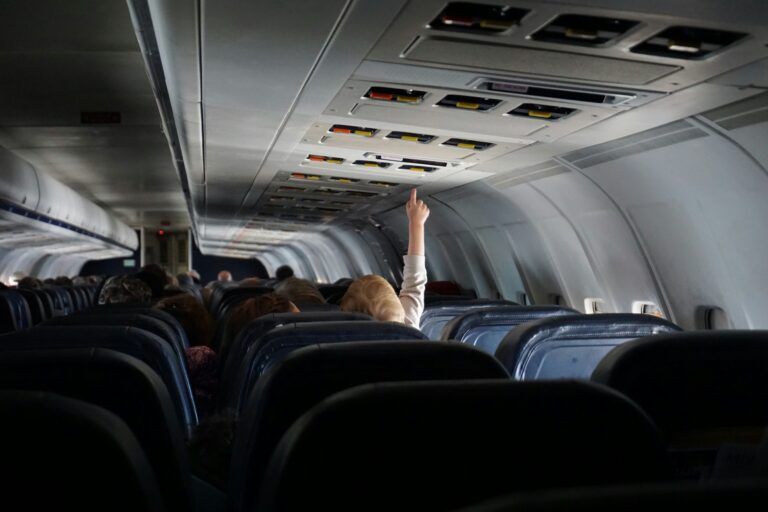
Supporting your child’s mental health by discovering the benefits of CBT
Mental Health Thank you for reading this post, don’t forget to subscribe! As parents, we all want the best for our children. But when they’re



Family travel represents one of the most powerful investments you can make in your children’s development and your family’s bond. Beyond creating treasured memories, traveling with kids offers invaluable opportunities for experiential learning, cultural awareness, and building resilience—all essential components of healthy child development. However, successful family travel requires strategic planning that considers both your budget and the unique needs of children at different developmental stages.
Thank you for reading this post, don't forget to subscribe!This comprehensive guide explores four distinct family travel approaches—flying, cruising, road trips, and camping—while providing practical parenting tips for creating enriching experiences that support your children’s growth and strengthen family connections.
Modern parenting research consistently shows that shared travel experiences contribute significantly to child development across multiple domains. From enhancing problem-solving skills and adaptability to fostering cultural empathy and family communication, travel serves as a dynamic classroom that supports cognitive, social, and emotional growth.
Whether you’re planning a cross-country road trip through America’s national parks, embarking on a cultural exploration of European cities, discovering the wildlife wonders of an African safari, or camping under the stars in the great outdoors, each journey offers unique developmental benefits and bonding opportunities for families.

Air travel opens doors to distant destinations that might otherwise be inaccessible for family vacations, making it ideal for parents who want to maximize their limited vacation time while exposing children to diverse cultures and environments.
Booking Intelligence: Successful family flight planning begins 6-8 weeks in advance for domestic travel and 2-3 months for international destinations. Utilize comprehensive fare comparison tools like Google Flights, Kayak, and Momondo to identify the most cost-effective options. Consider flying on Tuesdays and Wednesdays, which typically offer lower fares, and remain flexible with your travel dates to capitalize on significant savings.
Child Development Considerations: When traveling with children, timing flights around their natural sleep schedules can dramatically improve the experience. For toddlers and preschoolers, consider red-eye flights for long-haul travel, allowing them to sleep during the journey. For school-age children, involve them in the trip planning process to build excitement and reduce travel anxiety.
Family-Centric Airlines: Research airlines that prioritize family travel with services such as:
Realistic Cost Planning: Budget $200-$500 per person for domestic flights and $600-$1,500 for international travel, depending on destination and season. For a family of four, allocate $1,500-$3,000 for flights as part of your overall travel budget. Consider setting aside $150-$200 monthly in a dedicated family travel fund to make these expenses more manageable.
Cost-Saving Techniques: Explore alternative airports, consider one-way tickets on different airlines, and leverage travel rewards credit cards to reduce overall expenses. Book accommodation and flights together through package deals for additional savings.

Cruise travel offers a unique all-inclusive family vacation model that simplifies planning while providing diverse entertainment options suitable for multiple child development stages simultaneously.
Age-Appropriate Programming: Modern cruise lines excel at creating structured activities that support child development across different age groups:
Parental Benefits: While children engage in supervised activities, parents can enjoy adult-focused relaxation, fitness programs, or educational seminars—supporting the crucial parental self-care that enables effective parenting.
Value Assessment: While cruise prices start around $100-$150 per person per day, the all-inclusive nature often provides excellent value when you factor in meals, entertainment, accommodation, and supervised childcare. For a family of four, expect to budget $2,800-$4,200 for a week-long cruise, including gratuities and excursions.
Hidden Cost Management: Budget an additional 20-30% for shore excursions, specialty dining, and onboard activities. Many cruise lines offer beverage packages and WiFi bundles that can provide savings for families.
Driving vacations offer unparalleled flexibility for families, allowing you to explore at your own pace while creating opportunities for meaningful conversations and shared discoveries that strengthen family relationships.
Educational Opportunities: Transform drive time into learning experiences by incorporating educational stops that align with your children’s interests and developmental needs. Utilize apps like Roadtrippers and Atlas Obscura to discover museums, historical sites, and natural wonders that can enhance your children’s knowledge and curiosity.
Developmental Considerations: Plan stops every 2 hours for young children and every 3-4 hours for older kids to accommodate their physical and attention span needs. Pack activity bags with age-appropriate games, books, and creative supplies to keep children engaged during longer driving segments.
Accommodation Strategies: Mix camping, budget-friendly motels, and vacation rentals to balance cost and comfort. Consider investing in a family tent ($150-$400) or exploring RV rentals ($100-$300 per night) for extended trips, which can provide significant savings over hotel stays.
Food Budget Management: Packing nutritious snacks and meals can reduce food costs by 50-70% compared to restaurant dining. Invest in a quality cooler and plan simple, healthy meals that children can help prepare, turning mealtime into a family bonding and life skills development opportunity.
Estimated Costs: Budget $100-$200 per day for a family of four, including gas, accommodation, and food, making road trips one of the most economical family travel options.

Camping provides exceptional opportunities for children to develop resilience, environmental awareness, and practical life skills while offering families one of the most budget-friendly vacation options available. Read our full guide on this topic here.
Life Skills Development: Camping naturally teaches children essential skills including:
Family Bonding Opportunities: Without the distractions of technology and busy schedules, camping creates space for deeper family conversations, collaborative activities, and shared adventures that strengthen parent-child relationships.
National Park Adventures: America’s national parks offer incredible family camping experiences with costs ranging from $15-$30 per night. Many parks provide junior ranger programs, guided nature walks, and educational presentations that support children’s learning and environmental awareness.
State and Local Options: Explore state parks and local campgrounds, which often offer amenities like playgrounds, swimming areas, and organized activities while maintaining the authentic outdoor experience.
Initial Investment Strategy: While quality camping gear requires upfront investment ($300-$800 for basic family equipment), consider borrowing gear initially, purchasing second-hand equipment, or gradually building your camping kit. Many outdoor retailers offer seasonal sales and rental programs.
Ongoing Costs: After initial gear investment, camping typically costs $20-$60 per night, making it the most economical family vacation option. Budget an additional $50-$100 per trip for food and incidental expenses.
Infants and Toddlers (0-3 years): Focus on maintaining routines, packing familiar comfort items, and choosing destinations with family-friendly amenities. Shorter trips closer to home often work best for this age group.
Preschoolers (3-5 years): Involve children in simple trip planning, pack activity bags with new surprises, and choose destinations with interactive experiences like children’s museums or petting zoos.
School-Age Children (6-12 years): Encourage children to research destinations, keep travel journals, and take on age-appropriate responsibilities during the trip. This age group thrives on educational and adventure-based travel experiences.
Teenagers (13+ years): Include teens in destination selection and trip planning, allow for some independence within safe parameters, and choose experiences that align with their developing interests and identity.
Family Meeting Planning: Hold family meetings to discuss upcoming trips, set expectations, and assign age-appropriate responsibilities. This builds excitement while ensuring everyone understands their role in making the trip successful.
Packing Strategies: Create family packing lists and involve children in packing their own belongings (with supervision). This teaches organization skills and gives children ownership of their travel experience.
Emergency Preparedness: Prepare for common travel challenges by packing a family first-aid kit, researching medical facilities at your destination, and having backup plans for weather or transportation issues.
Flexible Scheduling: Build buffer time into your itinerary to accommodate unexpected delays, meltdowns, or spontaneous discoveries. Over-scheduling is one of the primary causes of family travel stress.
Positive Parenting on the Road: Maintain consistent discipline strategies while being flexible about routine disruptions. Focus on connection over perfection, and remember that some of the best travel memories come from unexpected adventures.

Monthly Savings Approach: Start saving $100-$300 monthly in a dedicated family travel fund. This makes larger trips more financially manageable and teaches children about goal-setting and delayed gratification.
Seasonal Timing: Travel during shoulder seasons (spring and fall) for significant savings on accommodation and activities, while still enjoying pleasant weather and fewer crowds.
Accommodation Alternatives: Consider vacation rentals, house-sitting, or home exchanges for longer stays. These options often provide more space and kitchen facilities, which can significantly reduce food costs.
Involving Children in Budget Discussions: Age-appropriately involve children in travel budgeting discussions, helping them understand the cost-benefit decisions that go into family vacations. This builds financial literacy and appreciation for family experiences.
Souvenir Budgeting: Give children a small souvenir budget to manage independently, teaching them about spending priorities and money management in a real-world context.

Successful family travel isn’t about visiting exotic destinations or spending enormous amounts of money—it’s about creating shared experiences that strengthen family bonds, support child development, and build lasting memories. Whether you choose to fly to distant shores, cruise to tropical islands, drive through scenic landscapes, or camp under starlit skies, the key is thoughtful planning that considers your family’s unique needs, interests, and developmental stages.
Remember these essential principles:
Budget-Conscious Travel Mantras:
With thoughtful planning, realistic budgeting, and a spirit of adventure, your family can embark on meaningful journeys that not only create cherished memories but also contribute to your children’s development and your family’s lifelong bond. Every trip, whether a weekend camping adventure or an international expedition, offers opportunities for growth, learning, and connection that will benefit your family for years to come.
The world is waiting for your family to explore it together—start planning your next adventure today!

Mental Health Thank you for reading this post, don’t forget to subscribe! As parents, we all want the best for our children. But when they’re

Travel tips Thank you for reading this post, don’t forget to subscribe! Planning a family trip can feel overwhelming, especially when you have little ones

Travel tips Thank you for reading this post, don’t forget to subscribe! Embarking on a road trip with children, especially teenagers and young adults, can





—where every challenge is an opportunity, and every moment matters.
